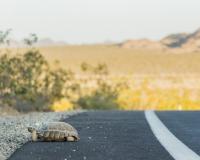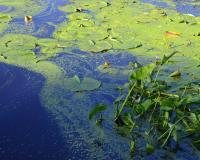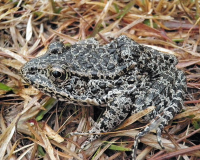
Vibrant Environment
Biodiversity
All | Biodiversity | Climate Change and Sustainability | Environmental Justice | Governance and Rule of Law | Land Use and Natural Resources | Oceans and Coasts | Pollution Control

Another member of the “Class of ‘67” has matriculated. On October 9, 2019, the Kirtland’s warbler, a colorful songbird, was declared by the U.S. Fish and Wildlife Service to have recovered and was taken off the federal endangered species list. The warbler is a member of the “Class of ’67,” a reference to the very first official list of endangered species published on March 11, 1967. It joins such fellow classmates as the American alligator, bald eagle, Delmarva fox squirrel, Aleutian Canada goose, Columbian white-tail deer, and gray wolf in having achieved this milestone.

On August 12, 2019, the U.S. Fish and Wildlife Service (FWS) and the National Marine Fisheries Service (NMFS) (together the “Services”) jointly announced final revisions to their regulations for listing and delisting species, making critical habitat designations, and undertaking consultations with federal agencies under the Endangered Species Act (ESA). The final rules are here. These rules become effective 30 days from publication.

Elephants are amazing animals and perhaps our most enduring mental image of Africa—large, untamed, inexhaustible. That image can also distract us from the unpleasant historical and current realities of colonization and exploitation of Africa and Africans, including African elephants. Evidence of this is like air, it’s all around us. So, like air, it goes unseen, like the fresco above the south entrance to the Federal Trade Commission building, here in Washington, D.C., portraying an obviously western man, extending a money bag to an apparently African man, who is on bended knee and holding an ivory tusk.

Women have been leaders in every major movement, though their contributions all too often go unrecognized. The environmental movement is no exception. Women striving toward the betterment of this field have faced many challenges, but through skill and determination, they persevered. The environmental movement is over two centuries long with generations of women shaping policies and laws within the field. This blog features just a handful of the numerous women who paved the way for future environmentally conscious generations.

By now, you have seen how biotech is transforming the food industry. You have also seen how it can revolutionize the construction and textile industries. In this final episode, we will explore biotechnology products you may find in your home in the near future.
The same platform used to brew hoppy beer without the hops, discussed in our last episode, is also transforming the fragrance business. In partnership with a Swiss perfume company, the bioscience firm Amyris synthetically produced patchouli, one of the essential oils that constitutes traditional perfume. This product, called CLEARWOOD®, was created using engineered yeast as its microbial platform, a more sustainable alternative to the costly and lengthy cultivation and extraction process of the patchouli plant. Meanwhile, Ginkgo Bioworks has designed its own aromatic oil....

Widespread harmful algae bloom (HAB) outbreaks have profound negative impacts: threats to human health and safety, stress on ecological systems, diminished quality of life, and significant economic loss to water-based recreational and commercial activities. They occur due to decades worth of nitrogen and phosphorus nutrient runoff deposited into our freshwater lakes and water bodies. Now, excess nutrient runoff and human activity have contributed to an uncontrollable rise in HABs across the globe. This ongoing accumulation of nutrients into our shrinking freshwater supplies combined with warmer temperatures has turned these precious water bodies into petri dishes for harmful algae growth. Removing the overabundance of nutrients is essential to restoring these water bodies and preventing the growth of future HABs.

Continuing from ELI’s December 10 post on the legal authorization and applications of TEK in the United States, today, we explore incorporation of TEK into Canadian law.
Around the world, decisions impacting indigenous peoples’ traditional territories historically have been made without the participation, input, and consent of the indigenous communities themselves. Natural resource management relied solely on Western science, excluding rich knowledge gained over centuries of direct experience and practice.

The Endangered Species Act (ESA) and the Convention on International Trade in Endangered Species of Wild Flora and Fauna (CITES) are seminal pieces of legislation that have governed species conservation in the United States for over 40 years. The ESA dictates a regulatory framework for identifying and protecting threatened species and provides funding and incentives to states to reach this goal. CITES is an international agreement signed by 183 nations that seeks to regulate and restrict the international trade of endangered wildlife. The adoption of this agreement gives party states some authority over species conservation in other parts of the world. The ESA acknowledges and works to cooperate with international species conservation policies like CITES, and it even includes provisions for executing CITES policies. Together, CITES and the ESA operate at state, national, and international scales, making use of agency, intergovernmental, and nonprofit partnerships to work toward species conservation.

Picture the American West.
What do you see? Does a herd of wild mustangs galloping across a sagebrush expanse come to mind? For many, romantic images of the western landscape celebrated in popular culture symbolize American ideals of rugged individualism and freedom. Although first introduced to North America by European colonists, wild horses came to represent those important American themes in our images of the West. Now, the iconic symbols pose a threat to western ecosystems.

The dusky gopher grog is a little-known endangered species only found in a few isolated pond habitats of southern Mississippi. This playful amphibian is apparently rather shy, covering its eyes and playing dead when held by a human. Unfortunately, the species has been struggling to survive for decades, encountering threats such as habitat loss, drought, and disease decimating its fragile population.